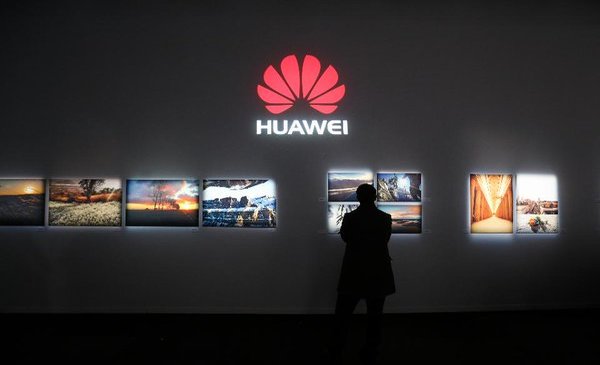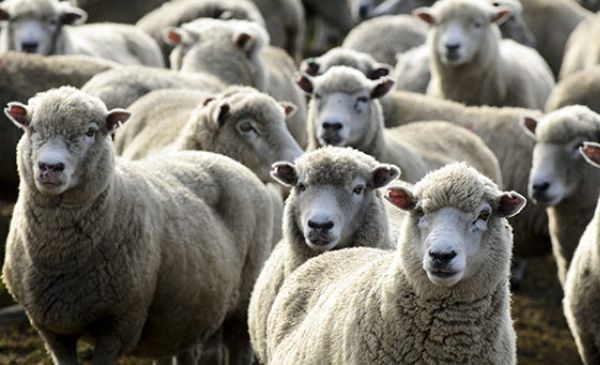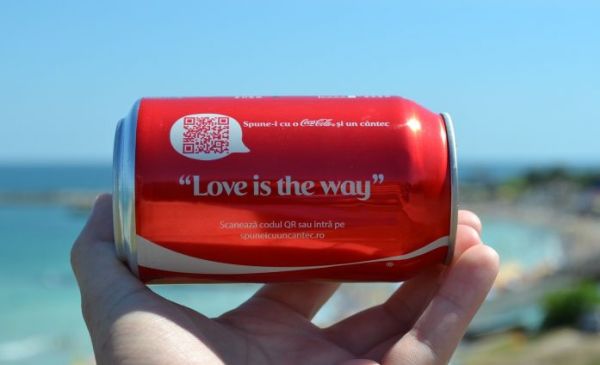
IBM’s editorial director, Michela Stribling, kicks off Session 1 at TED@IBM: Spark, November 16, 2016 in San Francisco. (Photo: Russell Edwards/TED)
From artists to scientists, mothers, mathematicians and business visionaries, people in every corner of the world are dreaming up solutions to our most pressing problems. Whether tackling war and peace or the principles of machine learning, ingenuity starts with one thing: a spark.
And regardless of where the spark takes hold, inspiration demands action to reach its greatest potential. At the third installment of TED@IBM — part of the TED Institute, held on November 15, 2016, at the SFJAZZ Center in San Francisco — a diverse and brilliant collection of speakers and performers dared to ask: What if we used our collective expertise and insights to provide a spark that could change the world for good?
After opening remarks from Michela Stribling, IBM’s editorial director, the talks in Session 1 challenged us to think about how we can work together to solve problems and, maybe, leave the planet better than we found it.
Where light meets sound. In a performance that blurs the boundaries of light and sound, Ryan and Hays Holladay create a visual experience of beats and tones shaped around reverberations of color. With multicolored projections and an assortment of carefully placed lamps, the brothers transcribe their music across the illuminated bursts of surfaces suddenly made visible. Here, music becomes the performer, rather than the performance, directing us not toward itself but toward the tempo and rhythm that orchestrates its narration. It’s a melody as much seen as it is heard: a series of intonations whose colorful pattern of sound eventually collapses into the nearly faded spotlight of a solitary lamp.
The answer to fighting cybercrime. Cybercrime netted $450 billion in profits last year, with 2 billion records lost or stolen. As the vice president at IBM Security, Caleb Barlow recognizes the insufficiency of our current strategies to protect our data from the ultra-sophisticated criminal gangs that are responsible for 80 percent of all cyber attacks. His solution? When a cyber attack occurs, we should respond to it with the same collective effort and openness as a health care crisis — we need to know who is infected and how the disease is spreading. Last year, Barlow and his team started publishing all of IBM’s threat data in an effort to encourage the same sharing from other major corporations, governments and private security firms. If we’re not sharing, he says, then we’re part of the problem.

According to Adam Grant, there are three basic kinds of employees: givers, takers, and matchers (who’ll match the prevailing behavior of the group). The key to a happy workplace is to balance that mix. Grant speaks at TED@IBM: Spark. (Photo: Russell Edwards/TED)
One bad apple spoils the bunch. The success of any company is defined by the quality of people who work there. Organizational psychologist Adam Grant has spent a lot of time analyzing business structures, and he’s concluded that there are three different types of employees: givers, takers and matchers. To achieve a balanced workplace with equal opportunity for and distribution of work, power and play, companies must endeavor to hire givers and matchers, whose personalities allow employees to feel supported, heard and acknowledged. The challenge is to stop takers from getting a seat at the table, because they so often undercut the spirit of collaboration workplaces need to thrive.
The business of rewriting stereotypes. After what felt like a lifetime spent simultaneously living out stereotypes and being imprisoned by them, Villy Wang wondered how she could break the cycle of racism and still make a living. She hit upon the idea of empowering young, diverse kids — those most misrepresented in the media — to become storytellers, training them in filmmaking so they can create new, authentic stories. After training, she helps place them into creative industries that influence media and entertainment, helping rewrite stereotypes at one of its sources. Wang has nested this entire program within a professional media production studio, a business that helps fund and ensure the future of the program. “Obviously, racism is deeply rooted in our history, politics, media and language,” she says, “but I believe if we can empower more diverse kids to take that narrative and change it, we will break hold of these ugly roots.”

Performer Ise Lyfe, at right, breaks down the Bay Area’s gentrification battles in a spoken-word collaboration with cellist Michael Feckses, performed at TED@IBM: Spark. (Photo: Russell Edwards/TED)
We are not mud, we are fertile ground. Spoken-word artist and activist Ise Lyfe sparks crucial dialogue on social justice through performance. With music accompaniment by master cellist Michael Feckses, Lyfe unravels the impact of the displacement of minority communities in American cities, threaded from his personal experience in East Oakland. By using the image of a flag in the mud to convey the claiming of a muddy territory, Lyfe creates a symbol for gentrification but urges: “I reject the notion of your flag in our mud. Let us be the spark to convey. We are not mud, we’re fertile ground waiting on the rain.”
AI and justice for all. You need a good lawyer if you’re involved in a legal case. But a typical case can cost thousands of dollars in legal fees — and a lot of that money goes toward the time it takes to learn the case and study the law around it, sifting through hundreds of documents and databases to find a winning angle. Lawyer and entrepreneur Andrew Arruda set out to democratize this process by partnering with a computer scientist to create the world’s first artificially intelligent lawyer, ROSS. Using ROSS, a lawyer can search through millions of documents in a matter of minutes, saving hours of research time. ROSS is already being rolled out, for free, to pro-bono lawyers who are helping those most in need. “Justice should cost the same for everyone,” Arruda says. “More money should not buy better justice.”
Intelligence, knowledge and wisdom … in the age of smart machines. Artificial intelligence is a next step in the evolution of our species; some say, in fact, we have come to the limits of our own intelligence. But intelligence is only part of the story — it’s what we do with that intelligence that matters. In a special video created for TED@IBM, Guruduth Banavar, chief science officer of cognitive computing at IBM, asks us to cultivate the wisdom necessary to improve our future.
An organic approach to an organic problem. Beset by plunging biodiversity, pathogens and skyrocketing populations, our global food supply is at risk — but solutions that rely on chemicals and genetically modified organisms come with their own problems. Computational geneticist Laxmi Parida proposes instead that we use the genetic biodiversity that already exists within plants, wrought over millennia by evolution, in order to safeguard our food. To sort through and make sense of the vast amount of sequenced DNA, artificial intelligence and machine learning don’t quite make the cut. Parida has another technique in mind: discrete mathematics. Using math, Parida is cracking open our understanding of the links between DNA and external traits, like stress resistance, so we can breed more robust crops while reducing strain on the environment.
Building with dust. The world-changing promise of nanotechnology remains just that — a promise. We don’t yet have the disease-fighting nanobots, elevators to space or quantum computers that nanotech could someday provide. Why? Because building things from nanomaterials is incredibly difficult, says George Tulevski, a nano architect and researcher at IBM. We don’t have tools small enough to manipulate nanomaterials into something useful. But Tulevski and his team think they’ve located the missing link: chemistry. They’re developing chemical processes to compel billions of nanoparticles to simultaneously assemble themselves into the patterns needed to build circuits, much the same way that natural organisms like Radiolaria build intricate, diverse and elegant structures. It’s like building a sculpture from dust, Tulevski says, and it may be the key to delivering on — or far exceeding — those original promises of nanotechnology.
Behavior hacks for the well-intentioned. “Why is it that we have such a difficult time doing what’s right?” asks behavioral scientist Bob Nease. “It’s because intention and action don’t often go hand-in-hand.” That is, good intentions don’t always lead to good behavior, while bad behavior is not always the result of bad intentions. So how do we bridge the gap between good intention and positive action? Nease offers two simple mind-hack solutions: first, make the right thing so easy to do that it requires minimal mind power to arrive at a good decision. Then make the wrong thing so drawn out and convoluted that it’s nearly impossible to justify doing. Nease applies these principles to current issues surrounding health, business and even government reform.

World music group Wobbly World led off Session 2 of TED@IBM: Spark with a musical celebration of collaboration that included singing, rapping, guitar, congas and much more. (Photo: Russell Edwards/TED)
Session 2 kicked off with Wobbly World, a global collective of musicians whose dynamic blend of sounds from around the world reminds us of the incredible power of music at bridging the cultural divide.
One of the most important tools in the fight against cancer? Time. An early cancer diagnosis can be the difference between a chance to fight for life, or death. But diagnostic tools tend to be costly, invasive and slow to reveal results, and they’re not always totally accurate. Cancer fighter Joshua Smith presents an affordable, formidable weapon in the fight against cancer that combats these statistics — a noninvasive early-warning system that works like a pregnancy test by intercepting and analyzing the biomarkers that may hint at the presence of cancer. With this streamlined process, says Smith, early-stage cancer detection can happen more frequently and start when a person is still healthy. It’s a strong beacon of hope in the fight against cancer.

We can’t afford to give up on government, says Charity Wayua. She speaks at TED@IBM:Spark. (Photo: Russell Edwards/TED)
How to cure ailing governments. In the current political climate, it’s easy to want to give up on transforming government, says public sector researcher Charity Wayua — but we can’t afford to be afraid to tackle challenges like government efficiency head-on. Starting in 2014, Wayua, a trained biochemist, and a team of scientists, engineers and technologists began to “treat” the government of Nairobi, Kenya, as an ailing patient in order to restore the health of the country and its economy. In keeping with a biomedical approach, the team examined the government, its divisions, its employees and every single one of its malfunctions before making a diagnosis and devising a strategic treatment plan. Within two years, the efforts of Wayua and her team paid off, and Kenya moved from 136 to 92 on the World Bank’s index ranking the ease of doing business there. As Wayua says, just because something is sick doesn’t mean it’s dying.
The drumming habits of neurons. In March 1993, an article published in the journal Cell identified the single gene responsible for Huntingon’s disease. The product of a nearly ten-year effort by scientists from around the world, the article held great promise that a cure for the neurodegenerative disorder would soon follow; yet today, there is still not a single medicine able to slow, stop, or reverse this disease. James Kozloski has watched a generation of neuroscientists struggle with this, and his conclusion is that neuroscientists have focused far too long on just the neuron. He argues that the answer lies not only in showing how neurons suffer from genetic disorders but also in how genes suffer from nervous disorders. Comparing the communication of neurons to the beat of a drummer, Kozloski highlights that in brains, things like a bad gene, an injury or aging can lead to changes in circuits that first create and then reinforce subtle bad drumming habits, which are often difficult to detect until it’s too late. His team has been working to detect these habits early in order to break them, mapping the brain’s core components and connecting them together in what he calls the Grand Loop. “Before we can fully understand how genes cause imbalance in neurons leading to their death,” he says, “neuroscience must understand how the brain’s core circuitry balances itself, how genes change synapses, and how brain feedback onto neurons, synapses and genes can push imbalance to the tipping point.”
How the internet of things is transforming the routine. How do we protect our aging population while letting them keep the comfort of their lives and their daily routine? Everyday objects with sensors and WiFi can track each step of that routine and form a picture of a life being lived, in real time, to the children and support systems caring for the safety and independence of their loved ones. Learn more about how the internet of things is changing the routine in another special video produced for TED@IBM.
A library of human cognition. What if you could consult Winston Churchill on a looming international crisis? Or ask Einstein what he thinks about the latest scientific breakthrough? National security expert Juliane Gallina is working on a way to harness the best minds of all time to make the world safer. When Gallina was in the military, she learned a special concept: the OODA loop, a mental model (which stands for Observe, Orient, Decide, Act) designed to help intelligence officers get into the minds of their adversaries. You’re in the OODA loop right now, Gallina says, and every person or team that makes decisions is constantly using it. Today, Gallina is a technologist, and she’s using the OODA loop in her work on cognitive computing. Her goal: to create a way to systematically record the way we think when solving problems so that future generations can better tap into the wisdom of the past. “Let’s find and record the exquisite thinking strategies of innovators and pioneers,” Gallina says, “and then let’s use it.”
The untold story behind a landmark NASA mission. Katherine Johnson, Dorothy Vaughn, Mary Jackson — you’ve probably never heard their names, but these three African-American women were instrumental in putting astronaut John Glenn into orbit around Earth. Their story has been largely untold until now with the upcoming release of biographical film Hidden Figures. Elizabeth Gabler, president of Fox 2000 Pictures, talks with TED@IBM curator Bryn Freedman about what drew her to make film and shares with the audience more about the women from the upcoming film and the barriers they overcame.
No expertise required. The problem with music, says Tim Exile, is that it’s so perfect. For those of us who didn’t grow up playing an instrument, instruments can never be objects of play because we’re often too afraid to mess around and try things out due to a strict idea of what an instrument should sound like. In a talk-performance hybrid, Exile demos a software instrument that he designed to allow anyone, whether they have musical training or not, to record loops, mix sounds and make music. “Apart from anything else,” he says, “this is is a hell of a lot of fun, and we’re all missing out!”

Grady Booch asks us to worry a bit less about artificial intelligence, while speaking at TED@IBM: Spark. (Photo: Russell Edwards/TED)
The illusion of intelligence. When we think about artificial intelligence and its possibilities, it becomes difficult to disassociate the concept with the dangers outlined by films like The Terminator and 2001: A Space Odyssey. For supporters like Elon Musk and Stephen Hawking, such fears are far from misplaced; they and others argue that artificial intelligence represents an existential threat to humanity. But according to Grady Booch, super-knowing is not the same as super-doing. Cognitive systems, he argues, are far different from the software-intensive systems of earlier generations, in that, “by and large, we don’t program them: we teach them,” imparting onto those machines reflections of our already-present human values. Rather than worry about any existential threat of superintelligence, Booch cautions us to focus instead on the realities that we currently face, “for the rise of computing already brings to us a myriad of other human and societal issues to which we must attend.” Indeed, from raising the level of education around the world to helping humans eventually reach the surface of Mars, “the right question we should now be asking is how shall we best use this technology to augment our humanity, not diminish it.”
























